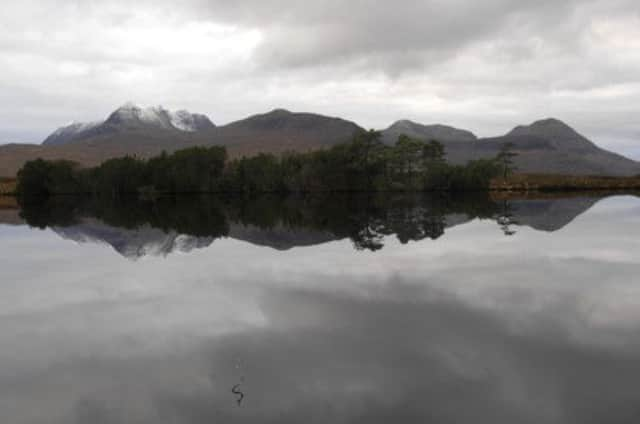£3m drive to unearth Iron Age secrets in Highlands


The grant is aimed at preserving the landscape of Coigach-Assynt and will go towards a number of projects, including the excavation of Clachtoll Broch. It was a local centre of power in the Iron Age constructed around 300BC on the north-west coast and is believed to have collapsed while still occupied.
It is hoped the work at the broch’s remains will uncover “occupational artefacts” never seen since the day it crumbled.
Advertisement
Hide AdGordon Sleight, chairman of Historic Assynt, said: “Unlike most brochs from that time, this one was subject to a dramatic collapse, which we believe happened while it was still in occupational use.” Brochs were numerous in the north and west in Iron Age Scotland and many continued in use well into the first millennium AD, going through many changes in form.
The Clachtoll Broch is believed to have collapsed between 150BC and 50AD and there is every reason to believe that below the tonnes of rubble in the interior is a complete Iron Age occupation layer undisturbed since the tower fell.
Mr Sleight said: “As most brochs continued to be used much later than the Iron Age, and many were later dismantled, items from this time were not commonly left behind.
“Assuming this was occupied at the moment of the collapse, then an excavation would provide a unique opportunity to see how people back then lived.”
Mr Sleight said the broch could have stood around 13 metres in height, almost as tall as the famous Mousa Broch in Shetland, one of the best preserved in the world. He added: “An excavation would give us a clearer picture of what happened, but the most likely theory is a part of a wall nearer to the sea gave way and collapsed. When one section of a circular tower falls, the rest will follow quickly.”
He said the funding announced by the Heritage Lottery Fund towards conserving the landscape of Coigach-Assynt would help with the excavation and preservation work.
Advertisement
Hide AdThe £3m investment is aimed at bringing long-term social, economic and environmental benefits to the area, home to some of the most rugged and spectacular of Scotland’s scenery. Its mountains, moorlands, lochs and coastline provide habitats for species such as golden eagles, wildcats, black-throated divers and freshwater pearl mussels.
Covering 606 square kilometres, the Landscape Partnership project, part of a wider 40-year vision, has been developed by a partnership led by the Scottish Wildlife Trust. It aims to restore parts of the landscape, including regenerating and reconnecting the remaining native woodland, restoring blanket bog and heath moor, and repairing and improving pathways, as well as excavating Clachtoll Broch.
Advertisement
Hide AdColin McLean, head of the Heritage Lottery Fund in Scotland, said: “Nature lies at the very heart of what makes Scotland special and nowhere is that more evident than the astounding scenery of Coigach-Assynt.
“However, the enormous pressures upon these landscapes mean that we have to tackle their restoration and conservation on a bigger scale than ever before.”
Viv Halcrow, project manager of the Coigach-Assynt Living Landscape, said: “This funding could have a great impact across the whole Coigach-Assynt Living Landscape. It would not only benefit the natural, cultural and built environment, but could also help to increase integration between communities, landowners, and organisations.”
The Clachtoll Broch is considered one of the most spectacular Iron Age settlements in north-west Scotland. Situated on a rocky knoll near the sandy beach at Clachtoll, the wall of this roundhouse still stands over 3m in height in places. The outer wall was constructed using stones of up to 100kg each.
Historic Assynt believes Clachtoll broch was built and occupied by a sophisticated maritime culture stretching up to the Northern Isles and out to the Hebrides.